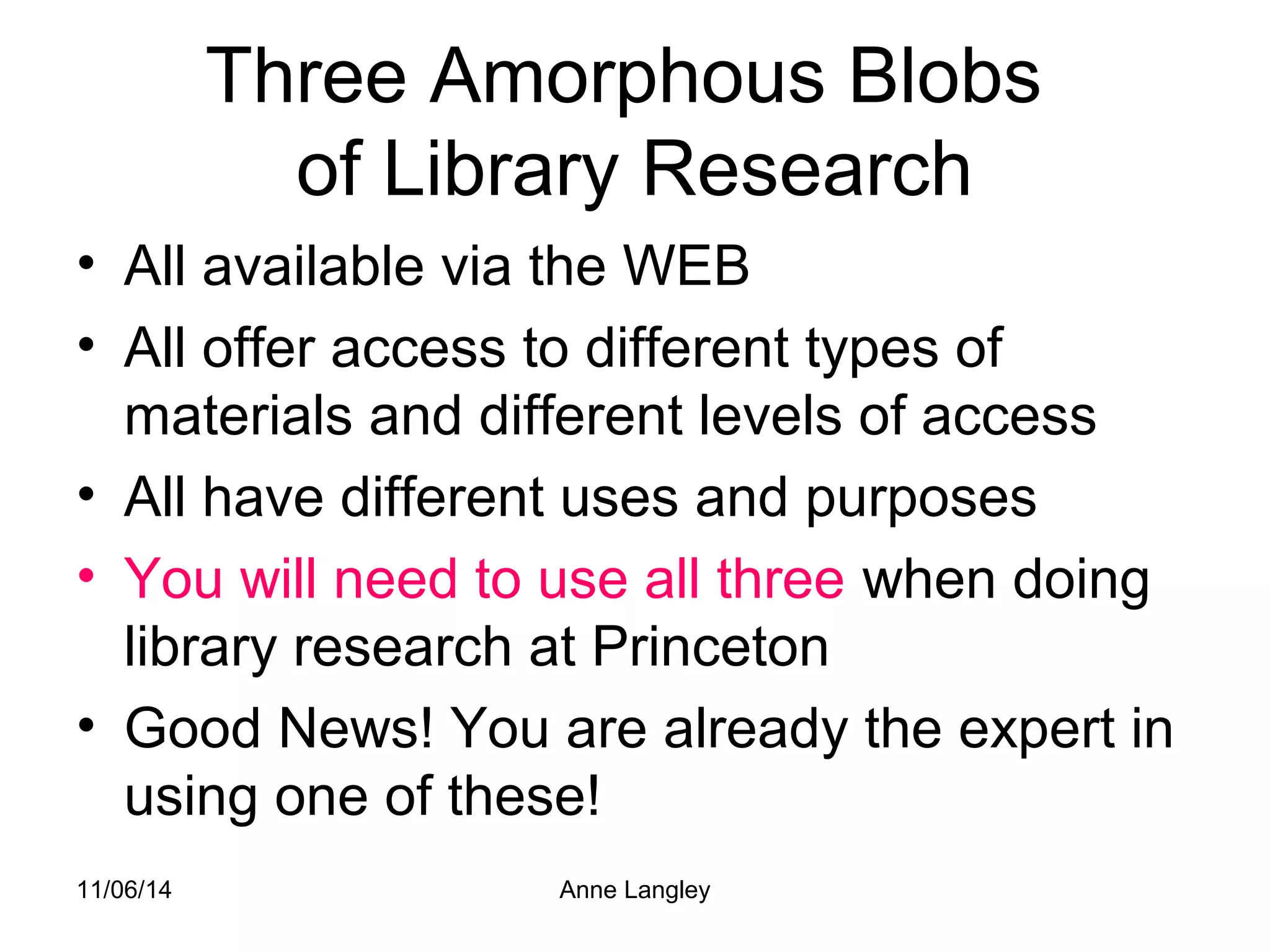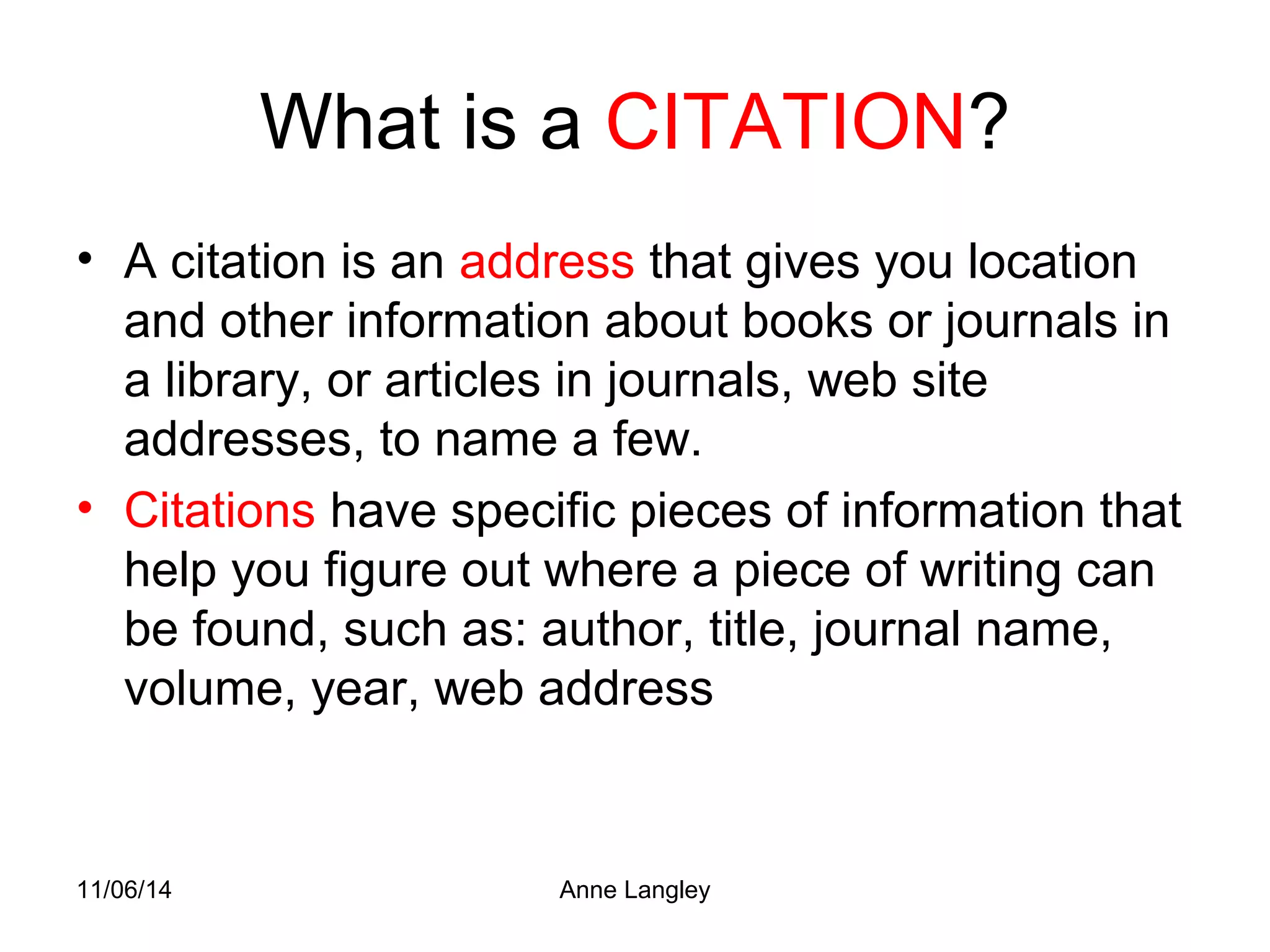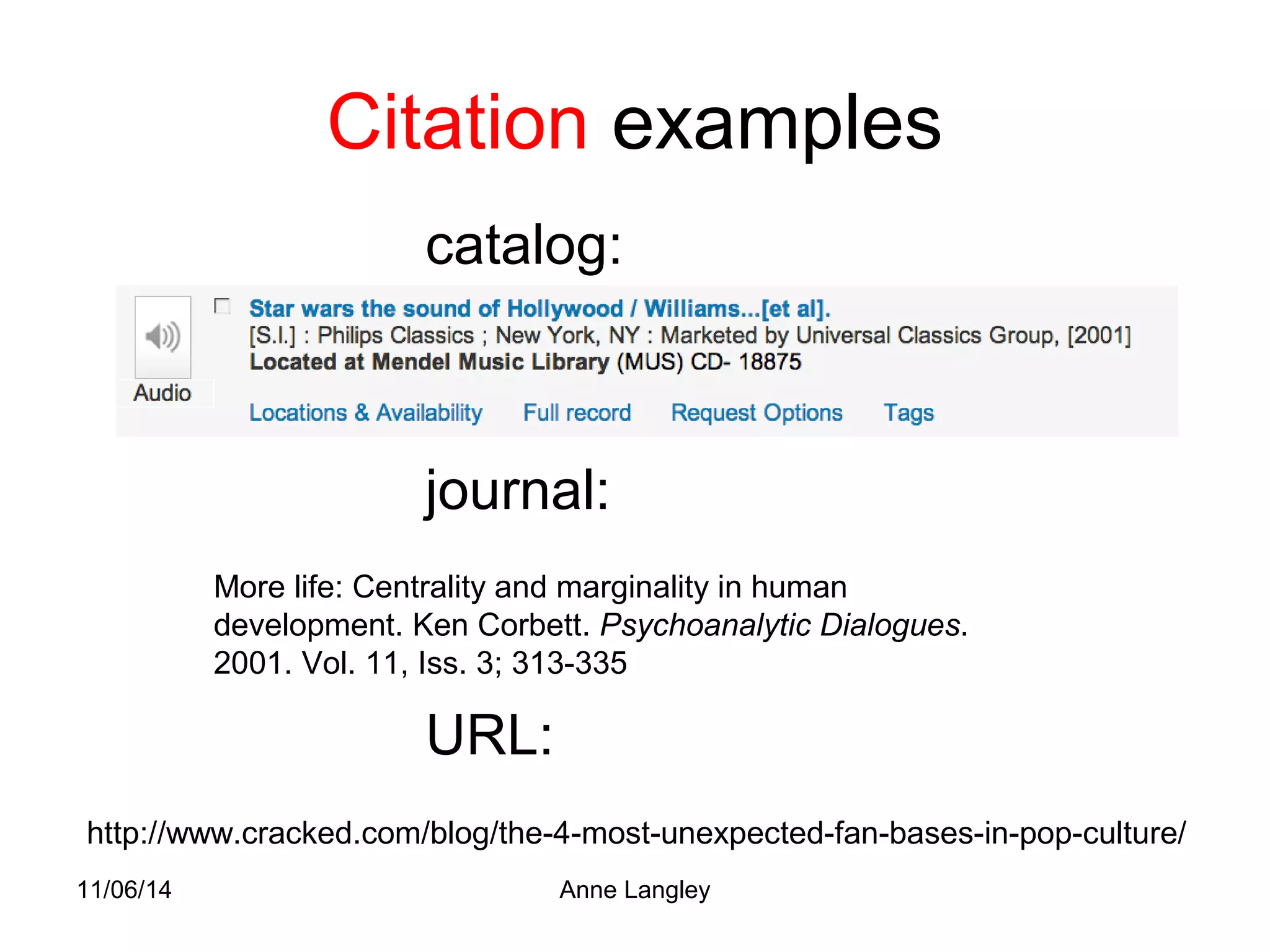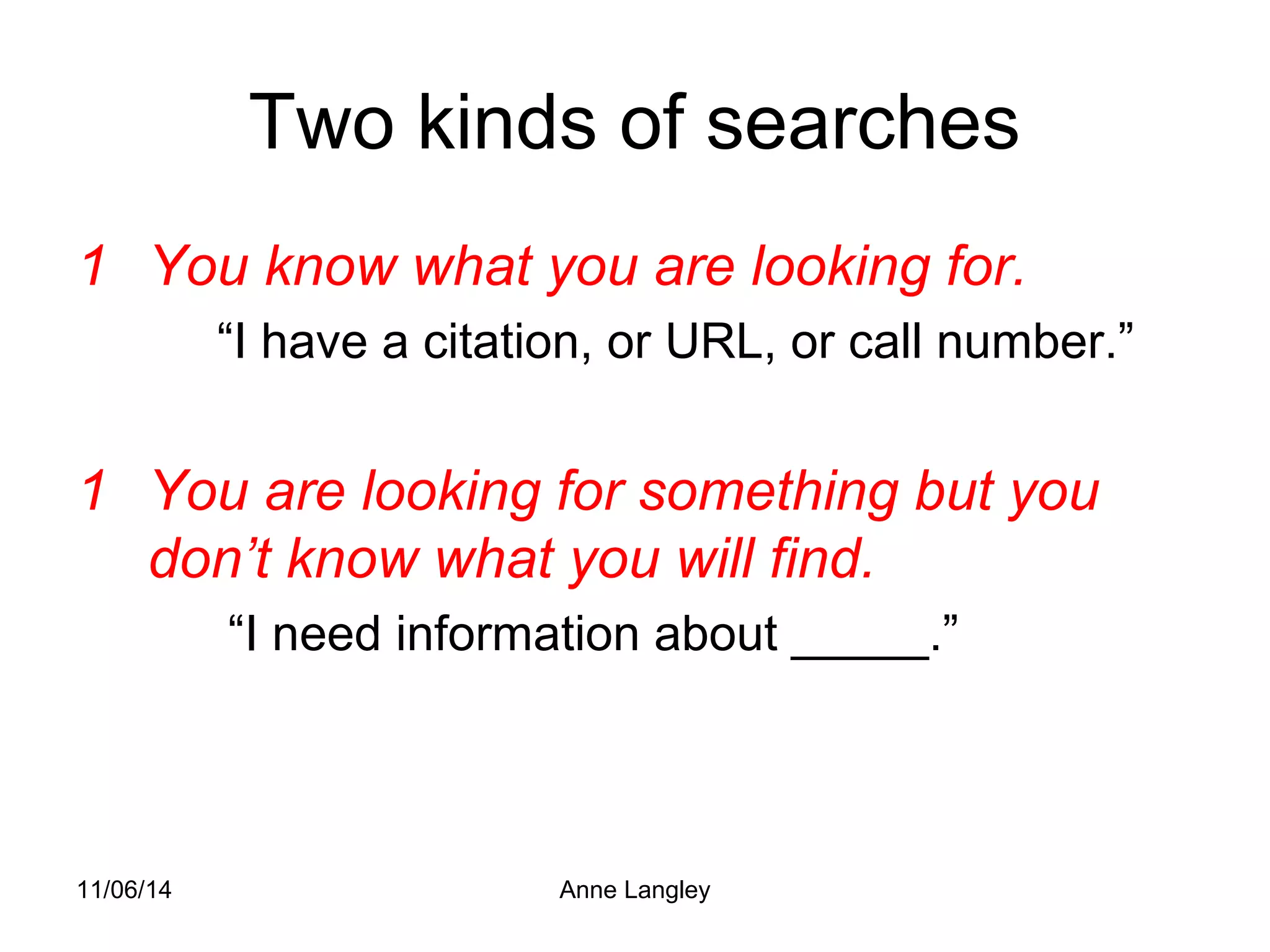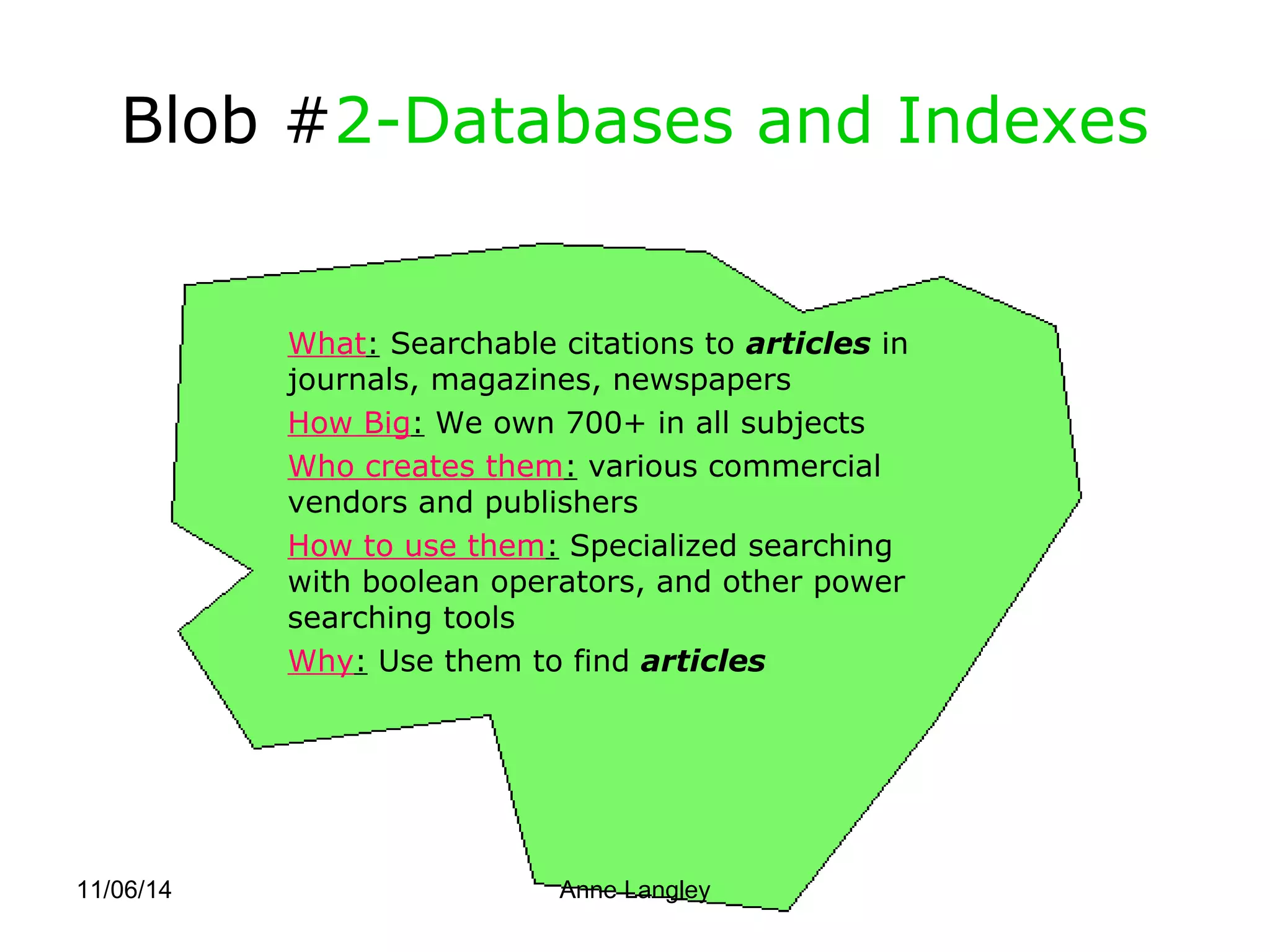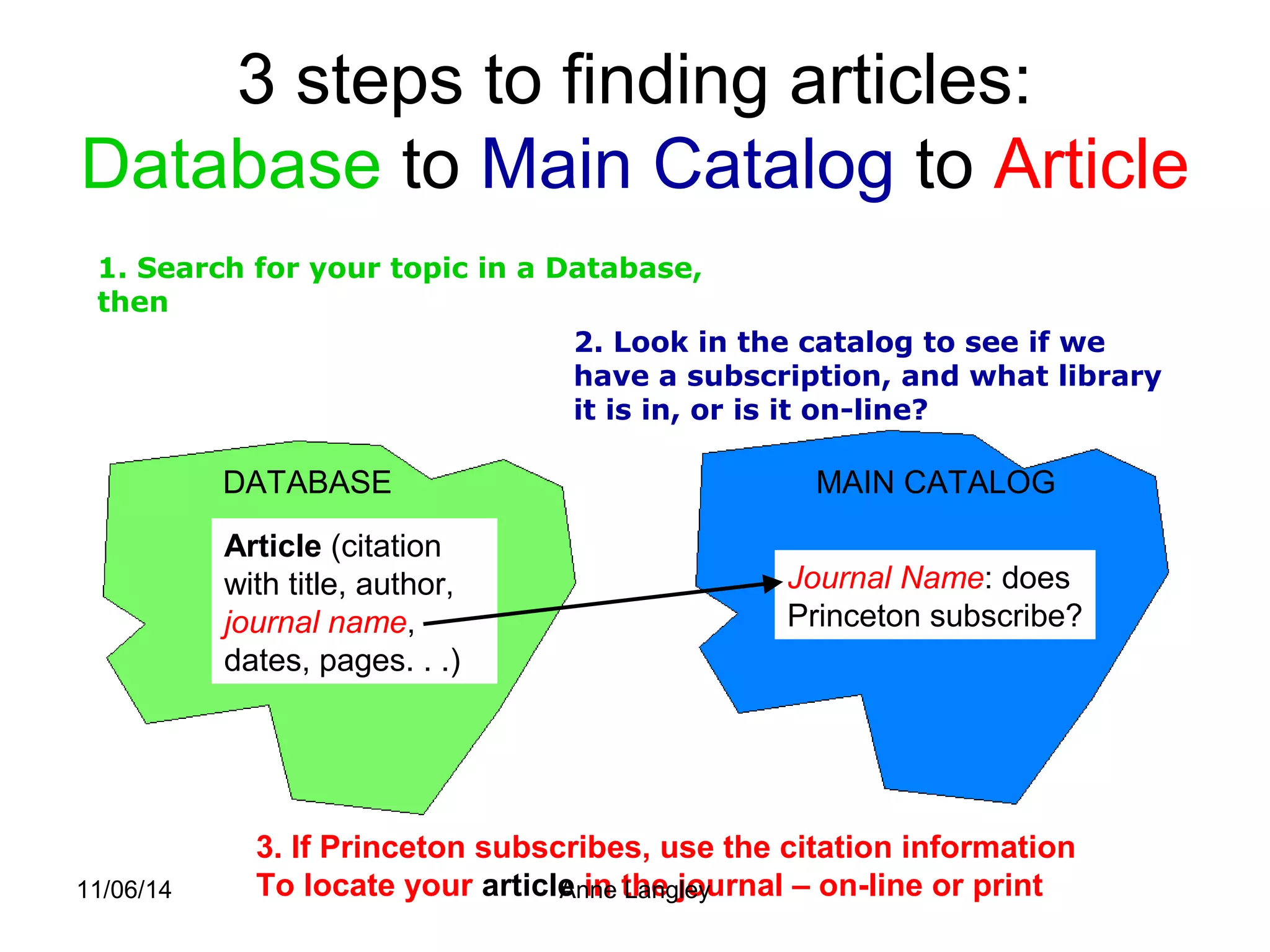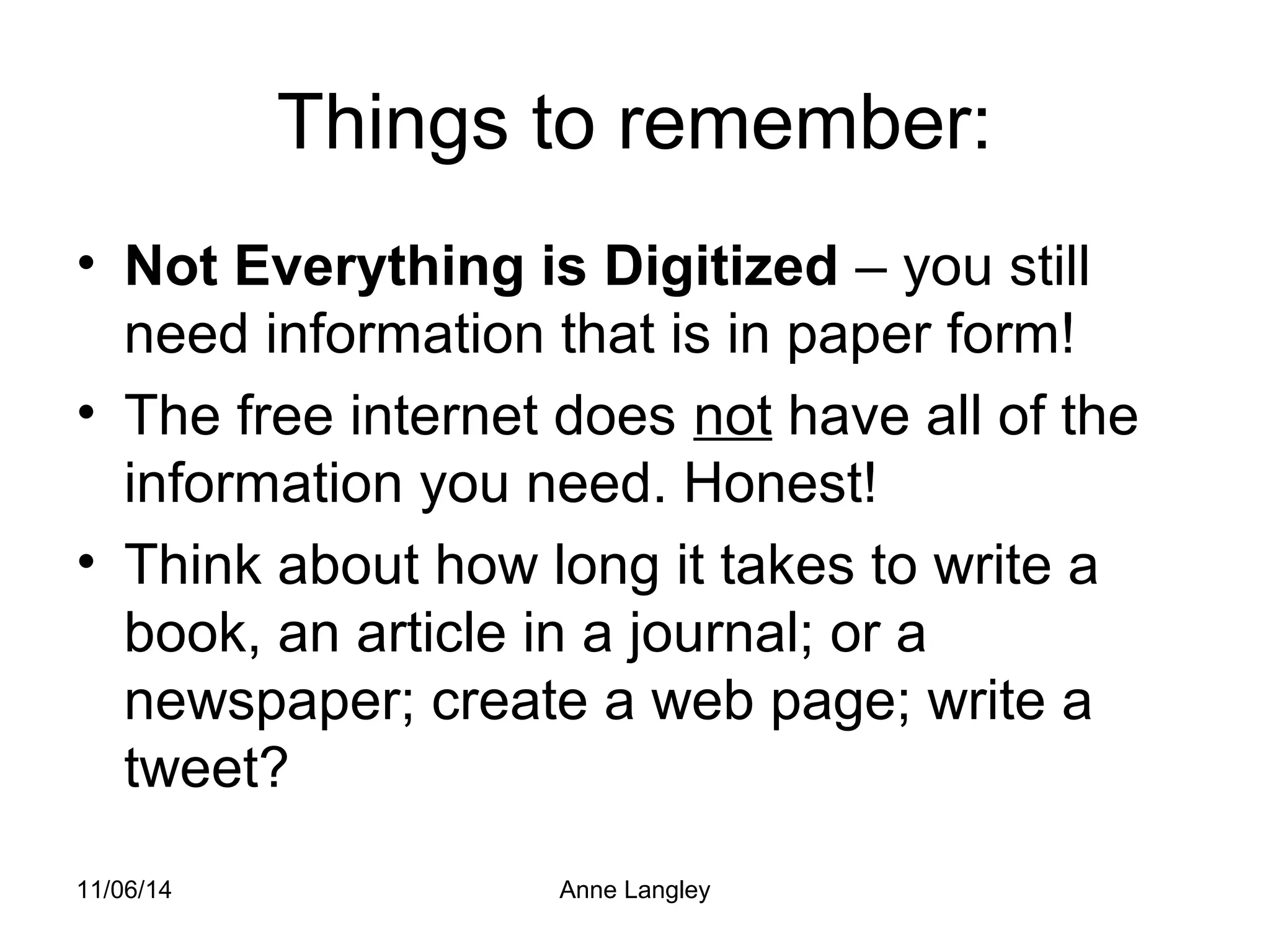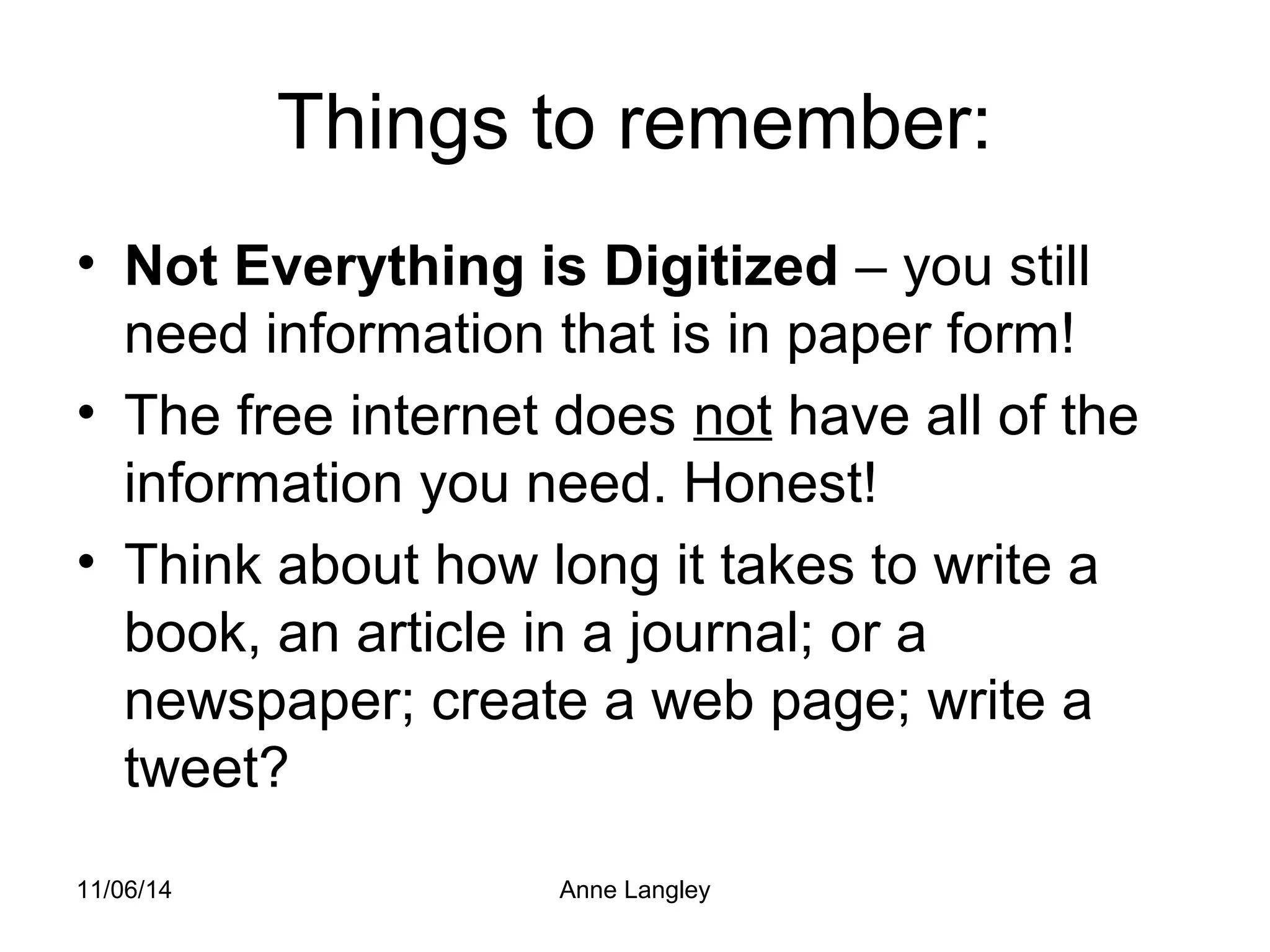This document discusses three main sources ("blobs") for library research - the Princeton Library Catalog, databases and indexes, and the free internet. The catalog contains citations to materials owned by Princeton libraries. Databases contain citations to journal articles and can be searched using Boolean operators. The free internet can be searched via search engines but does not contain all information. All three sources have different contents, uses, and search mechanisms.
